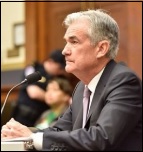By Pam Martens and Russ Martens: October 13, 2021 ~
The Federal Reserve Bank of New York has quietly posted the names of the banks that grabbed billions of dollars under the Fed’s emergency repo loan operations that commenced on September 17, 2019 – months before there was a COVID-19 crisis anywhere in the world.
The emergency repo loans were made via Open Market operations at the New York Fed. Under the Dodd-Frank financial reform legislation of 2010, the names of the banks, dollar amounts borrowed, interest rate and collateral posted must be made public “on the last day of the eighth calendar quarter following the calendar quarter in which the covered transaction was conducted.” Since the emergency repo loans were initiated in the third quarter of 2019, that meant eight quarters had passed and the public was entitled to the information for at least the month of September 2019. (The Fed has the power to release the information earlier if it chooses.)
We asked the Fed yesterday for the data and were stunned to learn that it had already been quietly posted on the New York Fed’s website with no media outlet being any the wiser.
The names of the banks and the eyebrow-raising amounts they borrowed from the New York Fed do not square with the official story at the time – that the liquidity crisis occurred because U.S. corporations withdrew large amounts from the banks in order to make quarterly tax payments. The fact that so many huge loans ended up going to foreign banks, as well as Goldman Sachs and JPMorgan Securities, suggests that this was a derivatives counterparty problem, potentially triggered by Deutsche Bank’s crisis at the time.
Deutsche Bank is a major derivatives counterparty to Wall Street mega banks. It was having serious problems throughout 2019. Its attempt to merge with Commerzbank fell through in April 2019. It announced a plan to fire 18,000 workers in July 2019 and had plans to create a good bank/bad bank, isolating off toxic assets that it planned to sell. Deutsche Bank had incurred losses in three of the prior four years. Its share price had lost 90 percent of its value over the prior dozen years and was trading close to an historic low in September 2019. The Monday after the emergency repo loan operations began, Deutsche Bank announced that it would be moving clients and staff from its prime broker unit (that makes loans to hedge funds) to BNP Paribas along with its electronic trading operations.
On September 17, 2019, the first day of emergency repo loan operations, Deutsche Bank borrowed $1.5 billion in a one-day loan. By September 24, Deutsche Bank had upped its one-day repo loans to $7 billion. By September 25, Deutsche Bank increased its one-day borrowing to $9 billion. On September 27, Deutsche Bank took a $3 billion 14-day term loan and rolled over $6 billion in a 3-day loan.
This first release of data from the Fed covers only the emergency loan operations from September 17 through September 30, 2019. Even more interesting will be the next release of data for the fourth quarter of 2019, when the sums borrowed from the New York Fed under its repo loan operations had grown exponentially. By March 14, 2020, we reported that the Fed had pumped more than $9 trillion cumulatively in repo loans to unnamed banks.
The current data for the last 14 days of September 2019 shows that Goldman Sachs and Nomura Securities International (part of a Japanese financial firm) borrowed huge sums under the Fed’s 14-day term repo loans. Goldman Sachs had $29.6 billion in 14-day term repo loans outstanding by September 27, then took an additional $5 billion one-day repo loan on September 30. Nomura, by September 27, had $30 billion outstanding in 14-day term loans.
On September 27, JPMorgan Securities had a total of $20 billion in 14-day term repo loans outstanding. On September 30, JPMorgan Securities took an additional $8 billion one day repo loan.
On the first day of the emergency repo loan operations on September 17, the New York Fed provided a total of $53.15 billion in one-day repo loans. JPMorgan Securities was the largest borrower at $7.6 billion or 14 percent of the total. JPMorgan Chase, the parent organization, owns the largest depository bank in the United States. At that point in time, JPMorgan Chase held $1.6 trillion in deposits. Why would it need to borrow $7.6 billion from the New York Fed on the very first day the emergency repo loan operations opened?
In addition to the $7.6 billion borrowed by JPMorgan Securities on the first day of repo operations on September 17, UBS Securities, a unit of the Swiss multinational investment bank UBS, borrowed $5.5 billion or 10 percent of the total offered that day.
Also on the first day: BNP Paribas Securities, part of the French investment bank, took $5 billion of the $53.15 billion or 9 percent. Goldman Sachs also took $5 billion or another 9 percent; Citigroup borrowed $3.5 billion; Nomura Securities borrowed $3.5 billion; the New York branch of Societe Generale, a French multinational investment bank, borrowed $3 billion; the New York unit of the Bank of Nova Scotia borrowed $2.5 billion; Barclays Capital, part of the U.K. bank, took $2.4 billion (There were numerous other borrowers.) See the full list here.
For a deeper understanding of how these banks are intertwined via derivatives, read our article: This Goldman Sachs Chart Explains the 2008 Financial Collapse and Why Wall Street Is Still a Dangerous Casino.
It’s long past the time for the Senate Banking Committee and the House Financial Services Committee to get to the bottom of what the financial panic that started on September 17, 2019 was all about.


